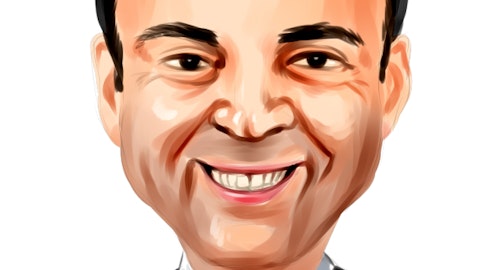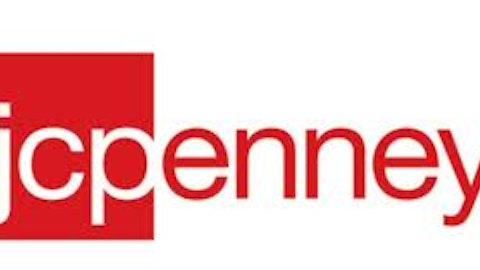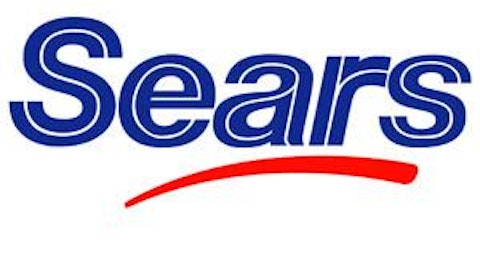Investing should be simple, but not too simple. Theoretically, we could buy an undervalued business and wait for the market to recognize its true value. However, the waiting time should be taken into consideration. If you could buy a business, which is worth $12, for $10 on the stock market, and that business could reach its fair value in one year, your annualized return will be 20%. If it takes five years for that business to reach its fair value, your annualized return will be far lower, at only 3.7%.
On the market, many investors can easily point out several businesses, which are trading for much less than their assets on their balance sheet. However, those businesses have two common characteristics. First, their businesses are struggling. Second, their undervalued assets are mainly real estate. Real estate assets are often illiquid, and it normally takes quite a lot of time for the market to recognize its full value.

Sears Holdings Corporation (NASDAQ:SHLD) is a typical example. Its business has been struggling for several years. In 2012, it generated $39.8 billion in total revenue but produced a loss of $930 million, or $8.78 loss per share. Sears seems to be a bit overleveraged. As of Jan 2013, it had $2.75 billion in total stockholders’ equity, $609 million in cash and $3.1 billion in both short-term and long-term debt. In addition, it recorded $2.73 billion in pensions and other benefits. The second biggest item on its asset, after PPE, was inventory, at nearly $7.6 billion.
Sears had huge real estate assets. Bruce Berkowitz, one of the most successful value investors, has bought around 17 million shares, or 13.4% stake in the company. He stated that Sears Holdings Corporation (NASDAQ:SHLD) has more real estate than Simon Property Group, Inc (NYSE:SPG), the largest real estate company in the world. However, Simon Property operates as a REIT, owning or having interest in 325 retail real estate properties with 242 million square feet and a 29% interest in 260 shopping centers in 13 countries in Europe via Klépierre, a publicly traded REIT.
At the current trading price of nearly $159 per share, Simon Property has a total market cap of $49.8 billion, while Sears is worth only $5.3 billion on the market. Berkowitz thought that if all of Sears’ real estate was fully valued on its balance sheet, Sears would reach more than $160 per share. While Sears Holdings Corporation (NASDAQ:SHLD) is trading at 1.92 times book value, Simon Property Group, Inc (NYSE:SPG) is valued at as high as 8.3 times its book value.
Reading International, Inc. (NASDAQ:RDI) is a much smaller company but shares similar characteristics of not so good business with undervalued high real estate value. The company operates or has an interest in 462 screens in 54 cinema complexes in the U.S., Australia and New Zealand. Based on net book value, around 29% of its assets were in the U.S., 53% in Australia and 18% in New Zealand. In 2012, it generated $254 million in revenue and produced a loss of $1 million, or $0.04 per share.
One of Reading’s shareholder, Capstone Equities has mentioned that Reading’s real estate, including four properties in Manhattan, was worth far more than its stated book value. According to Barron’s, in early 2012, Capstone has offered to buy two Manhattan properties, Cities Cinemas 1,2 & 3 in Third Avenue and Union Square Theater for $100 million, three times higher than its stated properties book value of $32 million. However, Reading did not accept the offer as it was “non acceptable.” Capstone thought that Reading International, Inc. (NASDAQ:RDI) should be worth around $12 – $14 per share.
At the current trading price of $5.60 per share, Reading is worth around $130.5 million. The market values Reading at 7.9 times EV/EBITDA and around its stated book value.
The Foolish bottom line
Sears Holdings Corporation (NASDAQ:SHLD) and Reading are clearly undervalued compared to their trading prices on the market. I personally think that some corporate restructures would be needed to unlock their huge potential real estate value.
The article It Takes Time to Unlock Hidden Real Estate Values originally appeared on Fool.com and is written by Anh HOANG.
Copyright © 1995 – 2013 The Motley Fool, LLC. All rights reserved. The Motley Fool has a disclosure policy.



